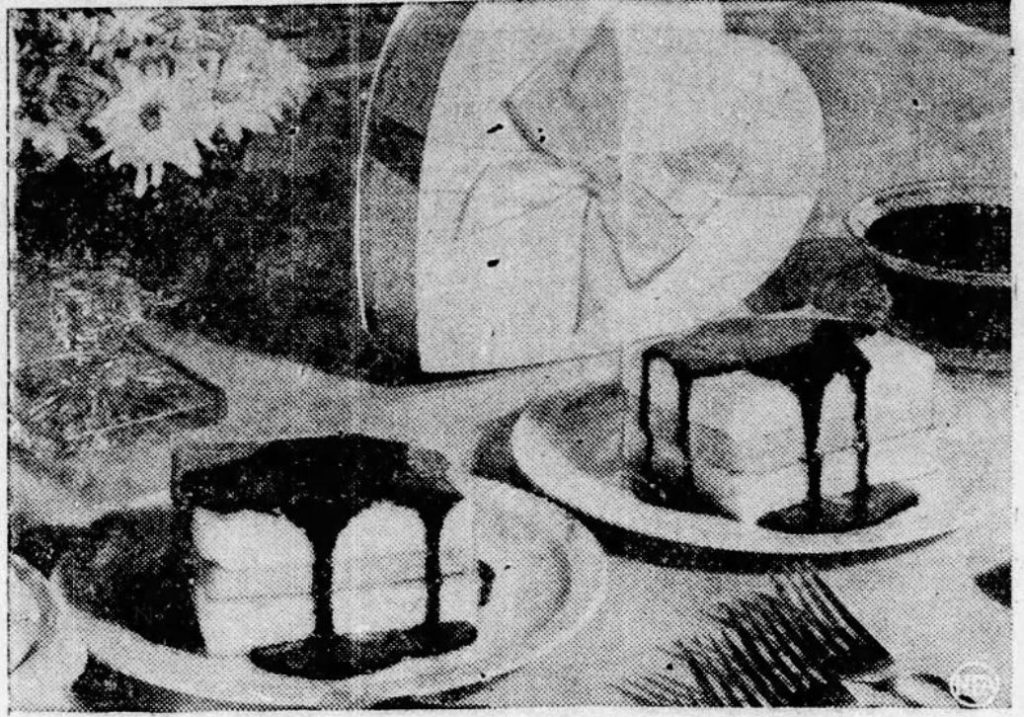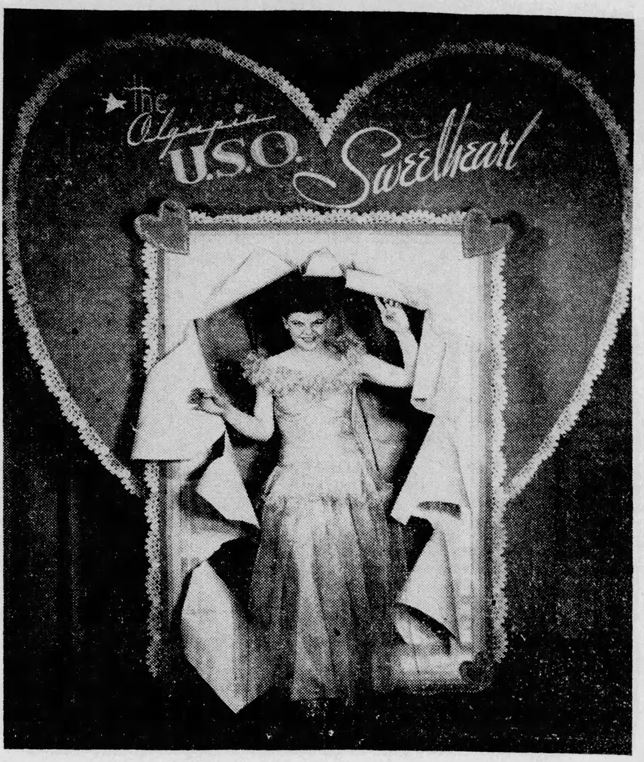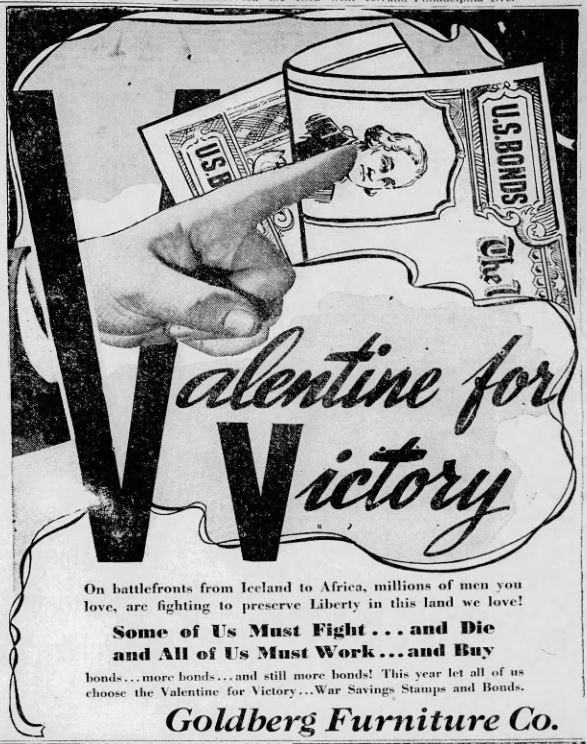Valentine’s Day has long been a holiday to celebrate love, friendship and family. During World War II it took on new meaning for people in Olympia. Check out Olympia’s history on celebrating this national day of love and see what’s stayed the same and what’s changed over the years.
Valentine’s Day in 1940s Olympia
Despite wartime rationing and shortages that limited travel, baking and gift-giving, Olympians found many ways to make the day special. Besides giving gifts of flowers, candy and clothing to loved ones – ties were a particularly popular choice for men – the holiday proved a popular time for engagement parties. “Your bride of tomorrow,” advised Sjolund’s Jewelry in 1944, “will cherish the diamond that you give her on this day.”
Clubs and friends also organized parties where guests could enjoy Valentine-themed refreshments, often bringing valentine cards to exchange. In 1942, for example, the Olympia Figure Skating Club, held a Valentine party at the Olympia Ice Arena with games, skating and dancing. Skaters pinned hearts on their sleeves. The public was also invited.
Valentine’s Day parties were particularly popular with children. The Mariner Troop Number 2 held a “Sweater Swing” for the holiday at the Olympia Girl Scout’s Little House headquarters. These girls, who concentrated on water activities, danced to favorite swing band music on the phonograph.
Schools also held celebrations. In 1942 the Skookumchuck School held a valentine program, serving valentine cookies and cocoa. But even children could not forget that there was a war going on. That same year eighth-graders at the South Bay School voted to buy defense stamps instead of giving each other valentines.

Olympia Supports Troops on Valentine’s Day During WWII
But for many people, their loved ones in the military were far away for the holiday, fate unknown. “Remember our boys and girls overseas this Valentine’s Day,” urged an ad for Starr’s variety store (221 East Fourth) in 1945, “Mail your cards early.” While the separation hurt, the Daily Olympian proclaimed in 1943, servicemembers were “all fighting to make the V in Valentine mean Victory, too.”
Closer to home, Olympians tried to cheer up soldiers visiting their town on leave. In 1943 the local USO held a formal St. Valentine’s Day ball on the day before the holiday, a Saturday.

Stepping through a giant paper heart-shaped frame, Marcheta King, a longtime USO volunteer and singer, was presented as the “Ideal USO Girl” as voted by the soldiers themselves in a contest sponsored by the Service Men’s Council of the USO. Accompanied by Corporal John Burdell, she led the dance with a waltz to a special arrangement of the song “Let Me Call You Sweetheart.” Sergeant Jesse Gonzalez’s 13-piece band from Fort Lewis provided the music.
The ball even won “No. 1” USO program in the United States in February, winning a commemorative plaque and a $50 War Bond. The contest was sponsored by the National Catholic Community Service.
In 1944 the USO held a War Bond drive dance near the holiday instead of a Valetine-themed dance. A group of 30 junior hostesses, in their best party frocks, traveled to Madigan General Hospital to celebrate with convalescent soldiers. The Red Cross Gray Ladies, a group of elderly women, decorated the hospital’s Red Cross recreation room for the party with valentines and greenery collected by Olympia Boy Scouts. The hostesses led musical contests and games for the patients. Marcheta King, former Ideal USO Girl, performed a few vocal numbers to great applause. Junior Red Cross members also sent 1,100 nut cups and valentines for the men’s dinner trays that day.

Another Valentine’s Day dance was held at the Olympia USO in 1945. A decorating party was held the night before the Saturday dance. A giant heart hung above the center of the dance floor, about to be pierced by the arrows of two Cupid marksmen.
As the 17-piece Medical Training Section Band struck up “Let Me Call You Sweetheart” Shirley Munz, former president of the local hostesses, was called to the stage and named the official “USO Sweetheart.” She was, as fellow hostess Georgianna Flansburgh explained, “the girl who typifies the attitude each of us tries to maintain as a Junior Hostess of the Olympia USO Club.”
Accompanied by Bedford Ottesen, seaman first class of the Shelton Naval Air Station, Munz led a grand march of 200 couples to begin the dance. Dance partners were chosen by matching souvenir hearts given to servicemen and hostesses at the door. Valentine cake and red punch were served.
That same year a group of 39 Olympia hostesses returned to Madigan Hospital to celebrate with patients. They hosted a game party, with prizes donated by Olympia merchants.
Valentines for Victory
By the next year, the war was over. Soldiers were returning home. As people rebuilt their lives after the conflict, they could now enjoy the new peace with their loved ones and honor those they had lost. Americans could all celebrate that the “V” of Valentine’s Day finally meant Victory too.

















































